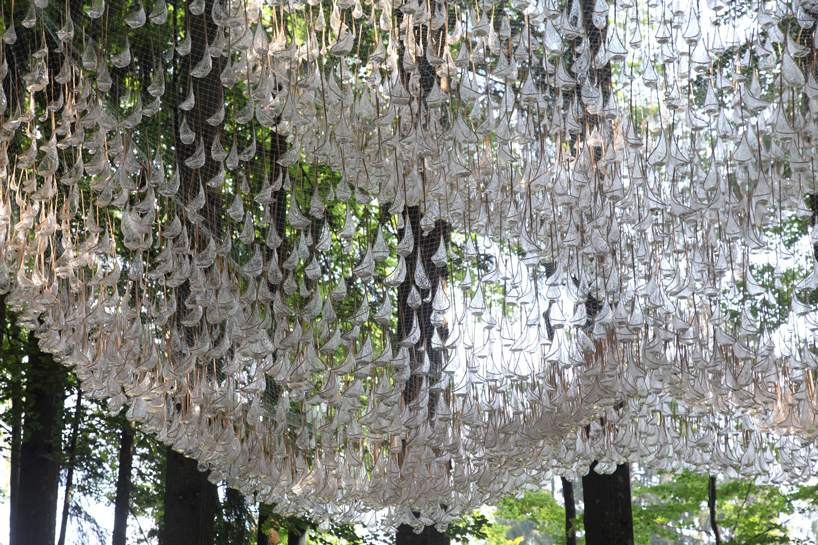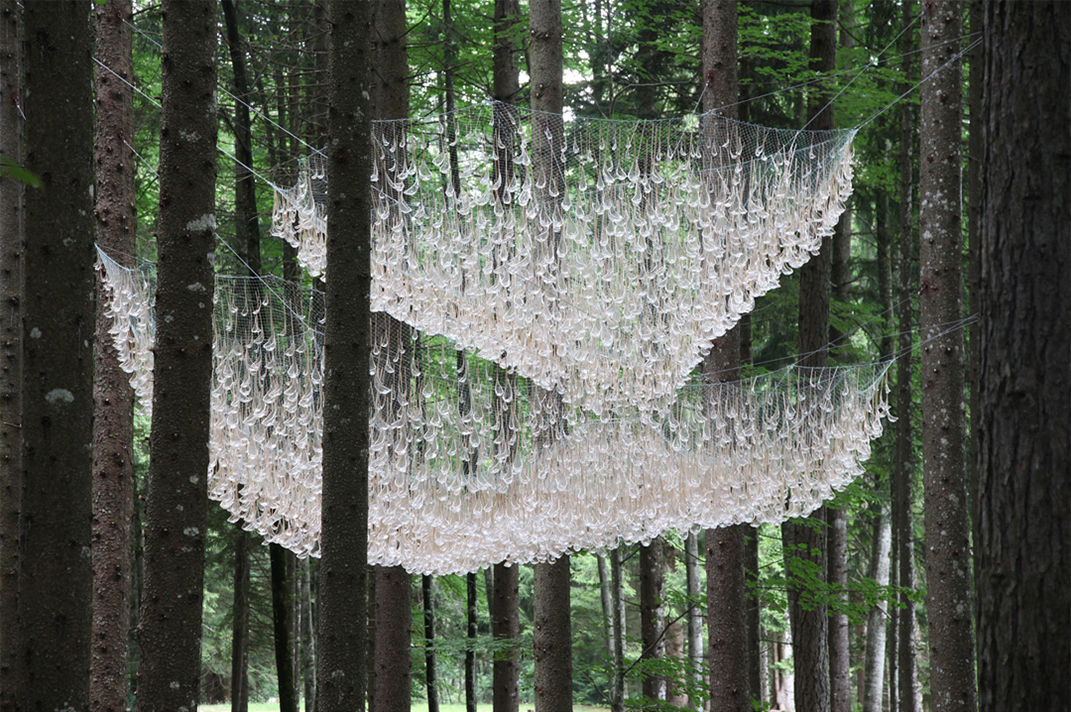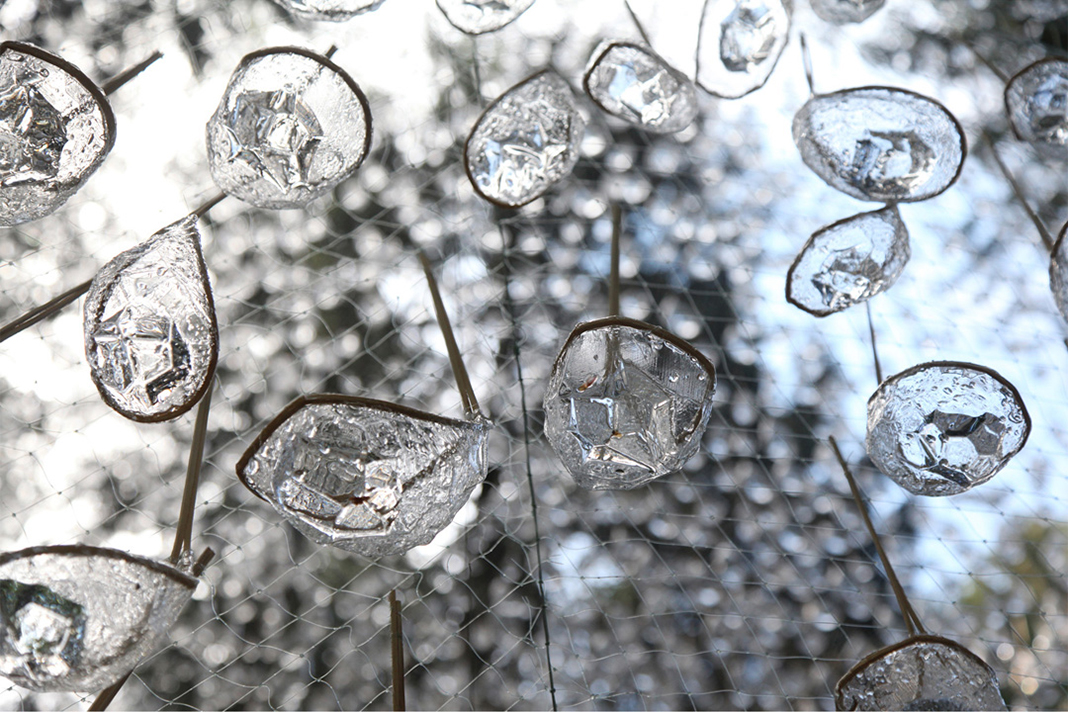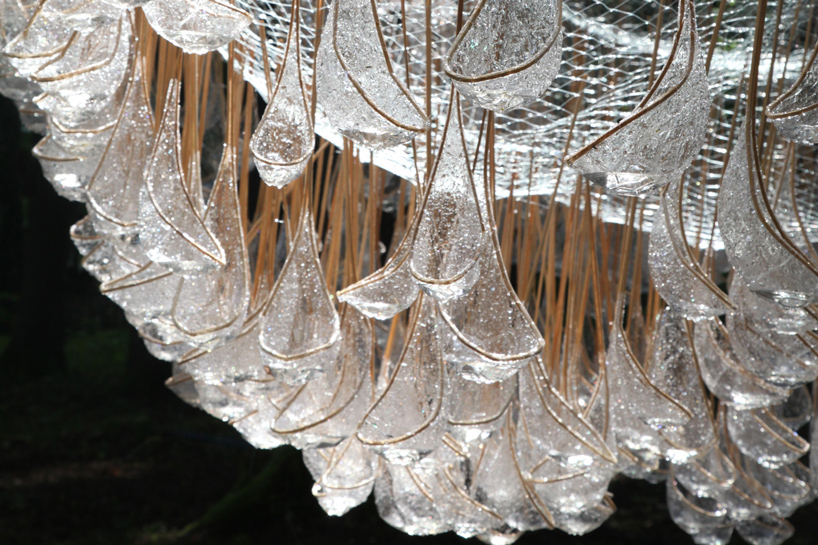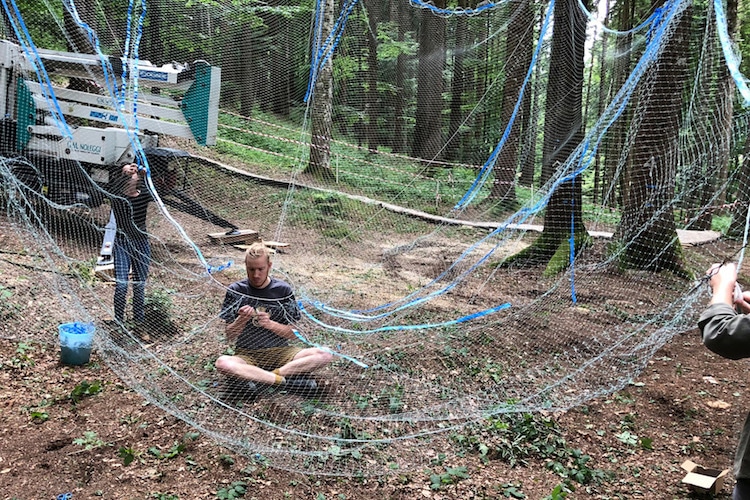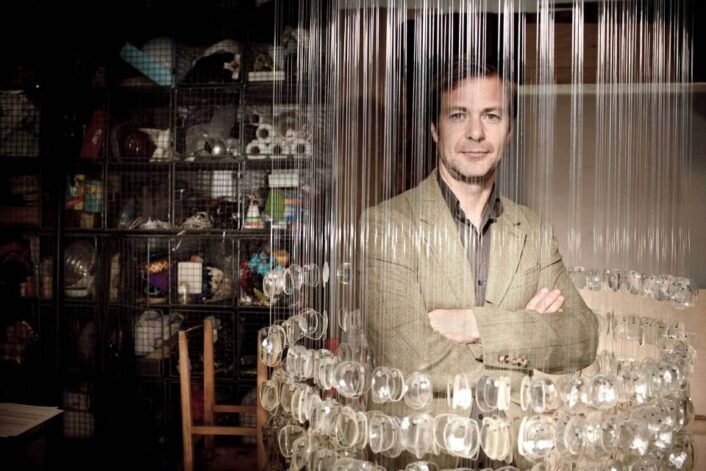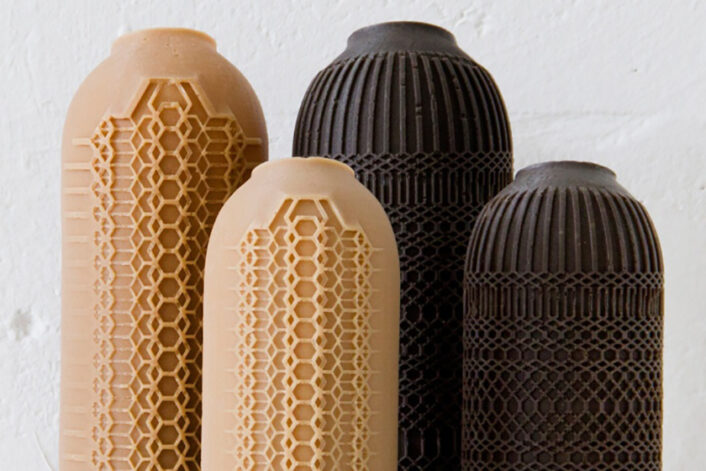When rain falls, the “Reservoir’s” clear pouches fill up and start resembling droplets. As rain fills each droplet, the installation gets heavier and drops lower. When warm and sunny weather arrives, the water inside the pouches evaporates and the structure rises back to its original height.
Interestingly enough, the installation provides an ecosystem of sorts because it serves as a water resource for the surrounding landscape. However when the water evaporates, a humid environment is created and vegetation flourishes!
Luckily, the sheathed springs below pulleys limit the installation’s vertical range of motion so that it remains at least ten feet above the ground at all times.
